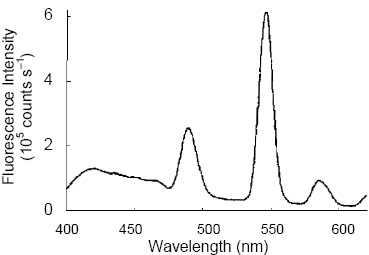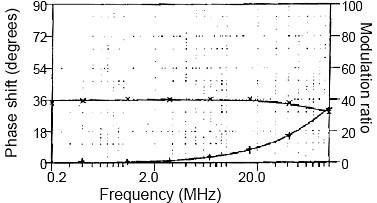Sponsored by HORIBAAug 15 2005
One of the fastest-growing segments of the semiconductor industry is concerned with a new generation of graphic displays for communications and high-definition television sets. For phosphors that might be used as the active medium in such displays, the critical characteristics are the lifetimes and wavelengths of their emissions.
Experiment and Results
To further complicate matters, the lifetime of the phosphor had to be obtained in a short period (three to five minutes) because of the rapidly changing character of the material. In addition, the phosphor and matrix were highly scattering, so stray-light rejection was crucial.
Figure 1 shows the emission spectrum of the final phosphor, confirming a useful visible emission dominated by the 550-nm peak.

Figure 1. Fluorescence emission spectrum of the phosphor complex, showing luminescence in the visible range.
In Figure 2 the results of the quick lifetime study (eight frequencies scanned in five minutes) indicate a three-component system, dominated by a very fast (10–9 s) decay. This fast emission assures that the phosphor will produce a high quantum yield within a timeframe compatible with refreshing the CRT’s screen.

Figure 2. Phase-shift (+) and modulation ratio frequency response (×) of phosphor complex.
Conclusion
This particular investigation of phosphor emission characteristics was made possible by the excellent stray-light reflection, sensitivity, and wide lifetime range of the FLUOROLOG® producing rapid and accurate characterization of the phosphor.

This information has been sourced, reviewed and adapted from materials provided by HORIBA.
For more information on this source, please visit HORIBA.